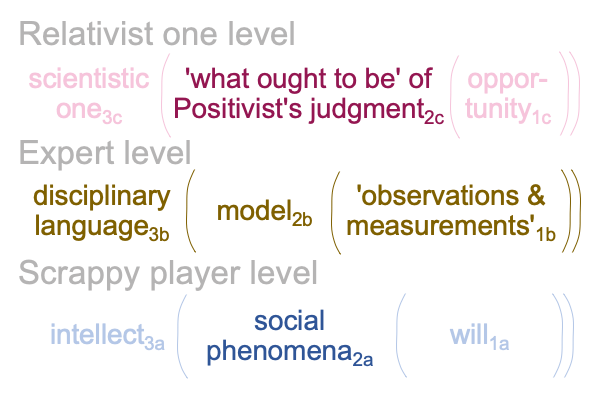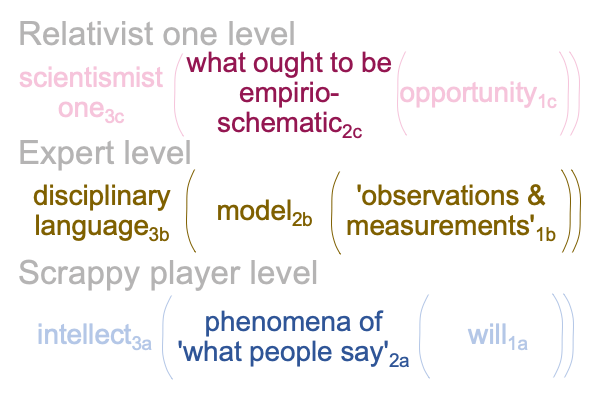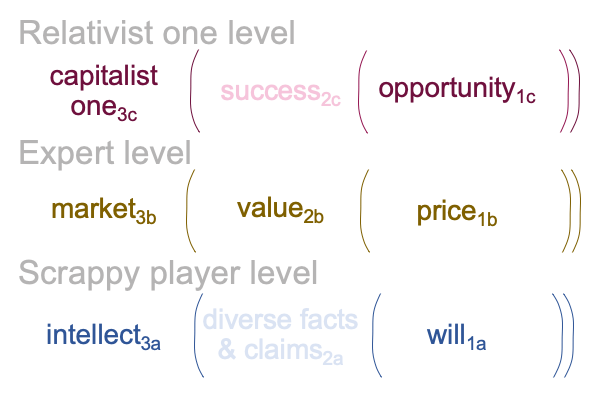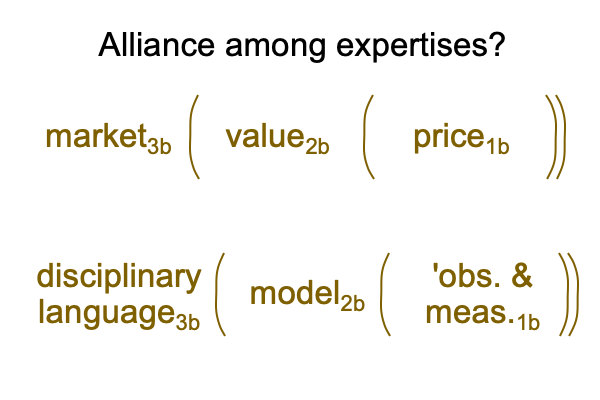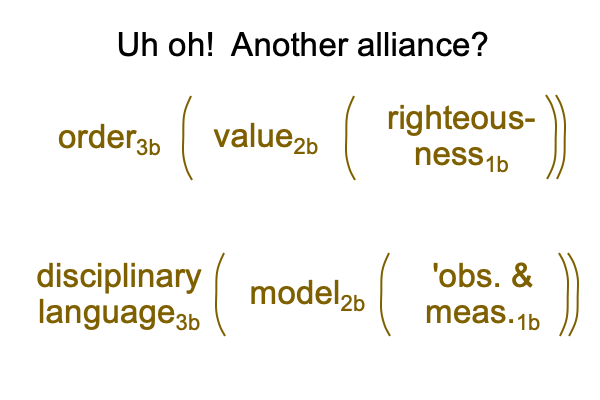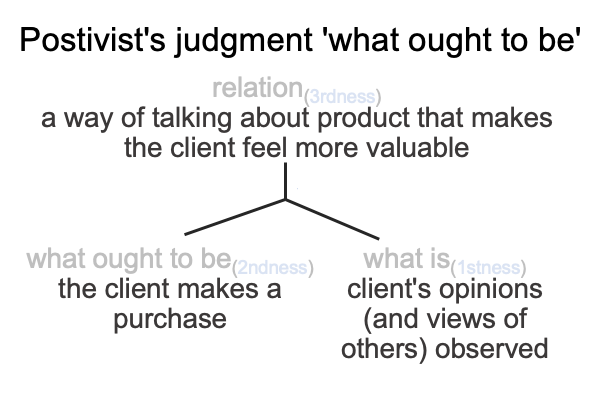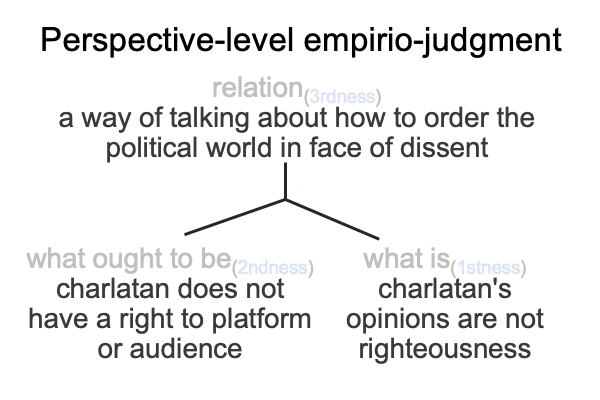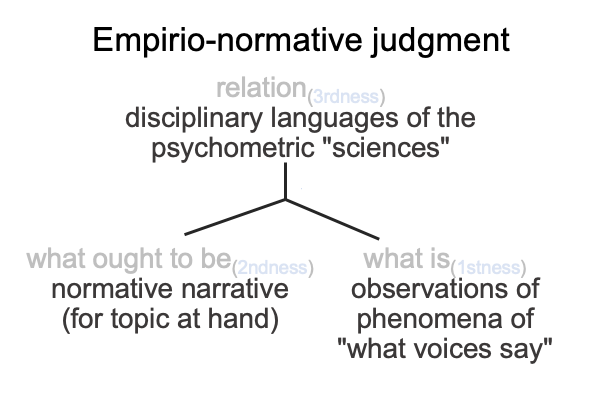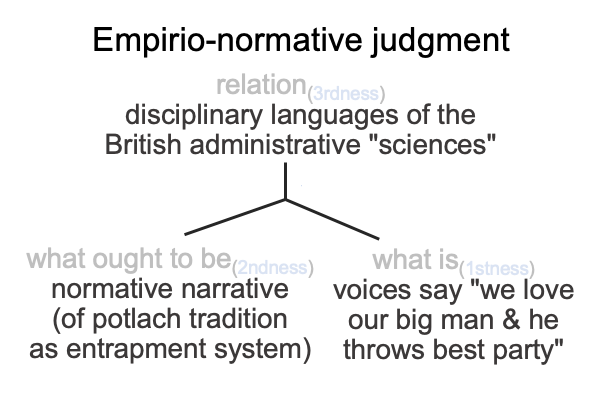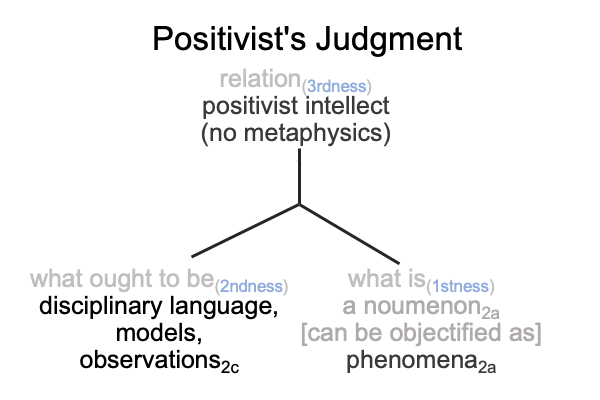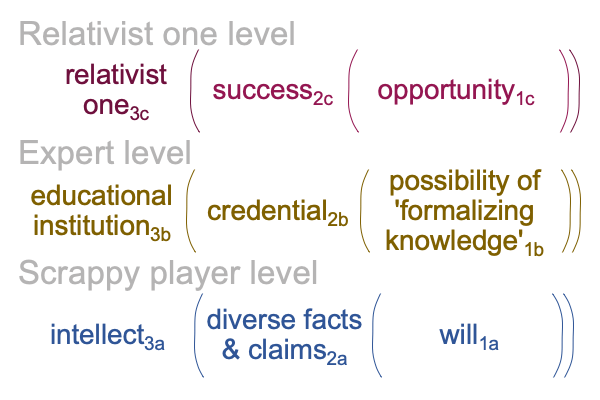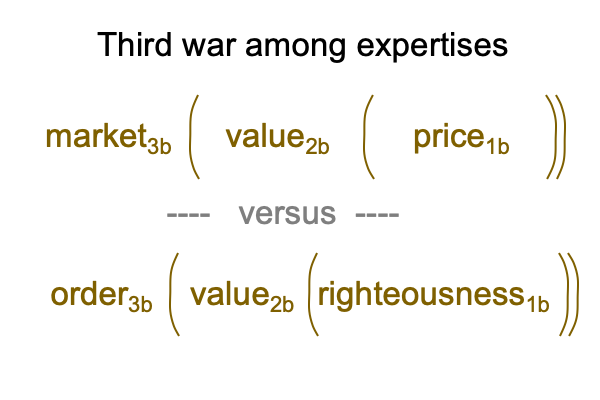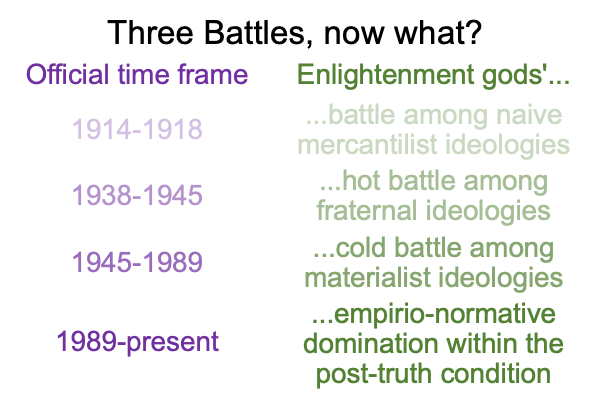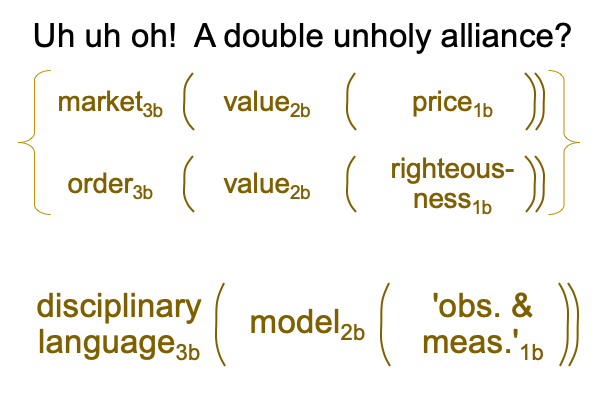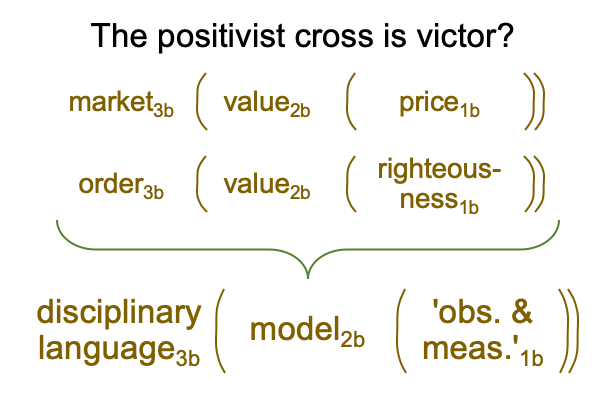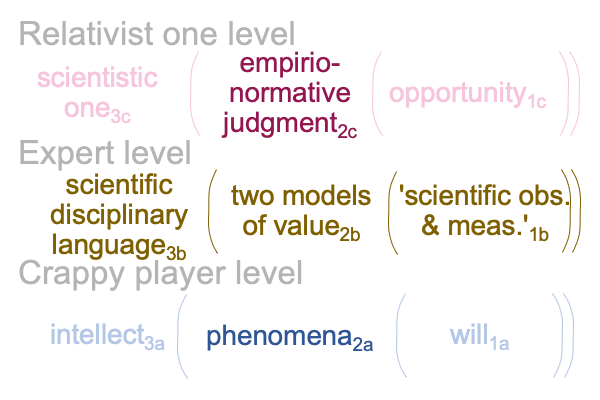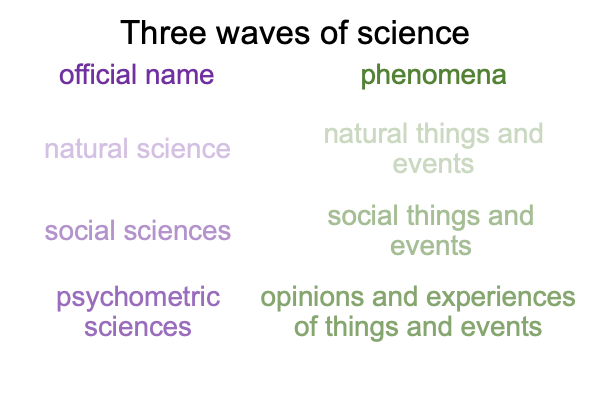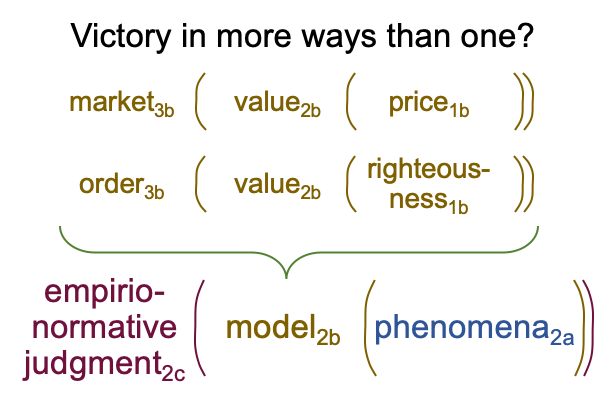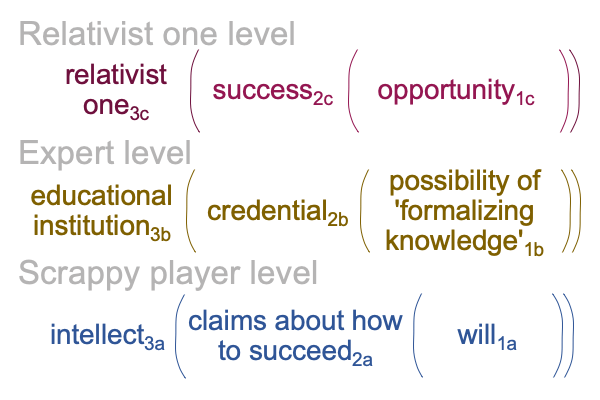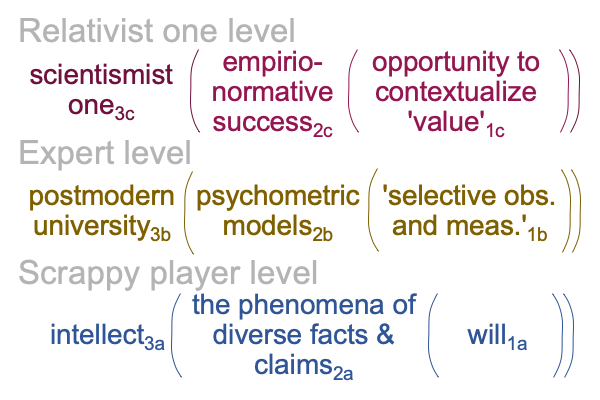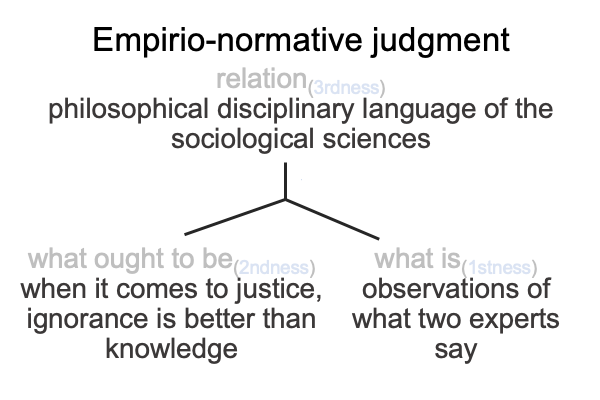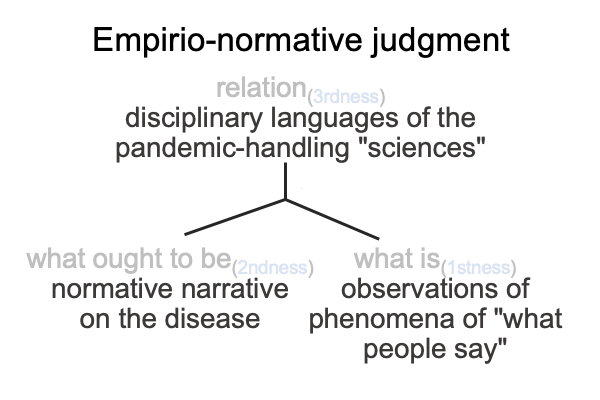Looking at Steve Fuller’s Book (2020) “A Player’s Guide to the Post-Truth Condition” (Part 10 of 26)
0086 I continue to examine chapter four.
What about science?
What is valuable in science?
Surely, mathematical and mechanical models are valuable to science.
Mathematical and mechanical models figure prominently in the empirio-schematic judgment.
Models are what ought to be.
0087 The empirio-schematic judgment is initially diagrammed in Comments on Jacques Maritain’s Book (1935) Natural Philosophy, as an element of the more encompassing Positivist’s judgment.
Here is a picture.
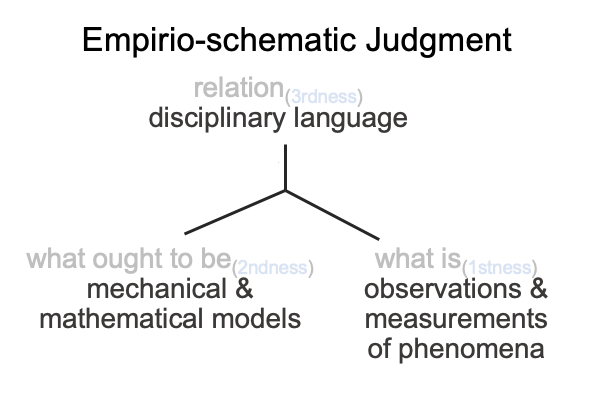
0088 A judgment is a triadic relation with three elements: relation, what ought to be and what is.
When each element is assigned a unique Peircean category, then the judgment becomes actionable.
Actionable judgments “unfold” into category-based nested forms.
So the above diagram translates into, “Disciplinary language (relation, thirdness) brings mechanical and mathematical models (what ought to be, secondness) into relation with observations and measurements of phenomena (what is,firstness).”
0089 Can I disperse the three… er four?… maybe five… elements in the preceding diagram into the interscope for the post-truth condition?
Here is my guess.
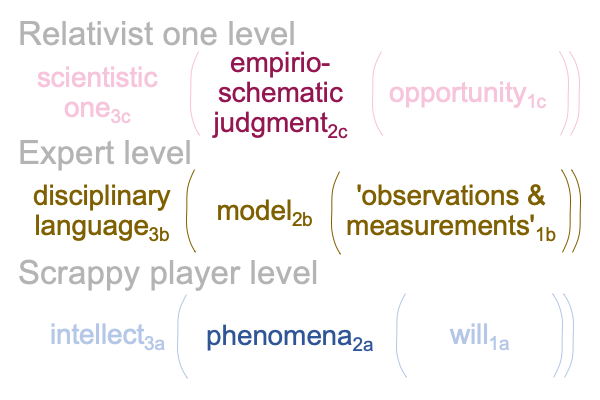
0090 On, the content level, the term, “phenomena2a“, is placed, like a mask, over diverse opinions about what is going on. How is this accomplished? Well, phenomena2a are the observable and measurable facets of a noumenon, a thing itself, which is supposed to be what all those unscientific opinions fixate on.
On the situation level, observations and measurements1b constitute the potential1b that characterizes phenomena2a.
Tautologies can be handy.
Phenomena2a are those features of all the opinions expressed by all sorts of people2a which have the potential of being observed and measured1b as phenomena2a.
0091 On the situation level, disciplinary language3b may occupy the same position as the expert3b. Does one displace the other? Or does an imaginative comparison of disciplinary language3b and experts3b suggest that the unfolded empirio-schematic nested form (on the situation level) is a variation of the nested form for certified expertise (also on the situation level)?
Here is the comparison.
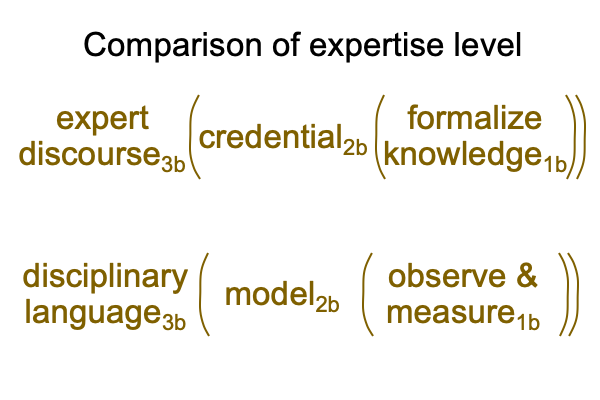
0092 On the perspective level, one may wonder, “How can the empirio-schematic judgment as a judgment virtually contextualize the empirio-schematic judgment as a category-based nested form? Isn’t there some sort of conflict of interest? Or is this another one of those tautologies that are ready at hand?”
0093 Well, there is a trick.
The empirio-schematic judgment is actionable because each element is assigned to a unique Peircean category and, therefore, it can unfold into a category-based nested form.
Plus, the empirio-schematic judgment occupies the slot for what ought to be in the Positivist’s judgment.
0094 So, the empirio-schematic judgment as what ought to be in the Positivist’s judgment (on the perspective level) can virtually contextualize the empirio-schematic judgment as a category-based nested form (on the situation level).
Here is a picture of the Positivist’s judgment.
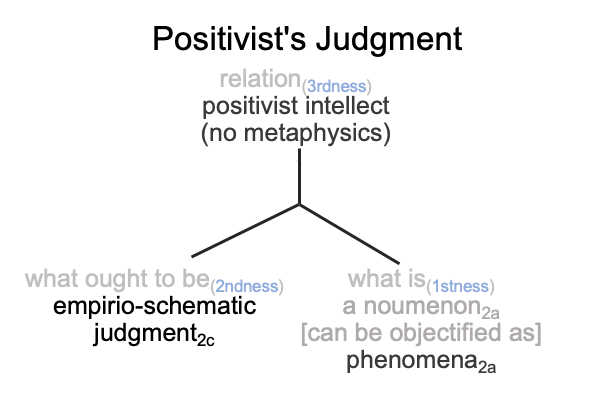
0095 The positivist intellect has a rule, “Metaphysics is not allowed.” This mandate governs the situation level and assists in differentiating phenomena2a from the thing itself2a. Phenomena2a cannot be regarded as metaphysical, while the noumenon2a (things that ordinary people are talking about) is commonly regarded in terms of outlawed metaphysical formal and final causalities. In other words, a lot of things that people say2a are ignored by the observations and measurements1b of various experts3b. If an opinion2a smacks of metaphysical connotations, or does not pertain to what contributes to the construction of a model, then it cannot be regarded as phenomena2a.
0096 Now, at the risk of overcrowding a diagram, I can place this nuanced explanation for why an actuality that looks like the empirio-schematic judgment2c can contextualize the situation-level unfolded empirio-schematic judgment in the interscope for the post-truth condition.
Here is a picture.
